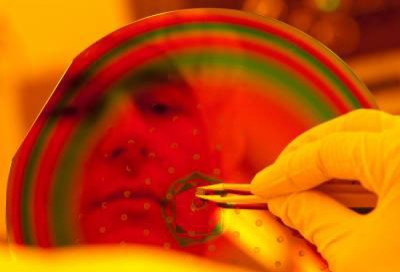New 'Electron Superhighway' Brings Science Closer to Quantum Computers

Physicists at Rice University in Texas have developed a device they are describing as an 'electron superhighway' in a breakthrough that brings scientists a step closer to realizing the quantum computer. Rui-Rui Du, professor of physics and astronomy, and graduate student Ivan Knez described how to create the device, called a quantum spin Hall topological insulator in a recent paper entitled Evidence for Helical Edge Modes in Inverted InAs/GaSb Quantum Wells.
Today's computers are binary, meaning essentially that they carry out their processes by taking direction from bits, or units of binary code, each of which represent either a one or a zero and whose value are represented by digital transistors. Instead of relying on traditional bits, which can only represent one value or the other, the quantum computer would utilize what are called 'quantum bits,' or 'qubits.' The qubits, because of their quantum nature, would be able to represent both values simultaneously. In an interview with Nanowerk News, Dr. Du explains that this superposed state allows for tremendous processing power when performing certain kinds of calculations, equating the processing capacity of one quantum processor with 30 qubits to that of a silicon microprocessor with 1 billion transistors.
The problem is that their nature also subjects the qubits to quantum fluctuations, which cause the data carried on the qubits to degrade over time. It's a concern that has led to research into a number of different ways of dealing with the issue. Hoping to circumvent this type of degeneration, Du and Knez are pursuing an approach called topological quantum computing, which seeks to pair the quantum particles, which protects the information. Unfortunately, these pairs, called Majorana fermions are exceedingly hard to pin down and, in fact, have yet to be observed by scientists.
Du believes that the topological insulator, if paired with a superconductor, will allow scientists to both observe and create the Majorana fermions. Attaching the superconductor to the topological insulator, which only conducts electricity along its surface, should facilitate the appearance of Majorana fermions where the two surfaces meet. If the particle pairs turn out to be stable, as hoped, they may ultimately contribute to the ability to generate qubits for use in quantum computers. Though only one of many steps still ahead of Du, Knez, and their colleagues, the significance of their work will undoubtedly play a tremendous role in subsequent research seeking to better scientists' understanding of the elusive Majorana fermions and bring us ever closer to the reality of the quantum computer.
© Copyright IBTimes 2025. All rights reserved.





















